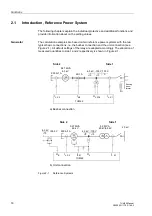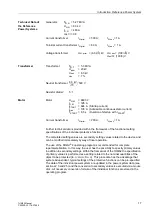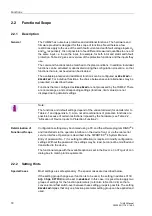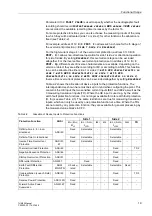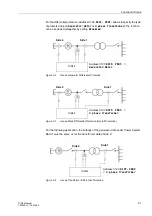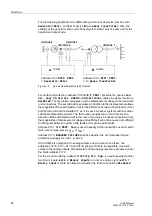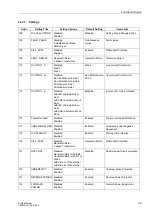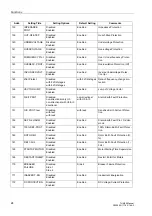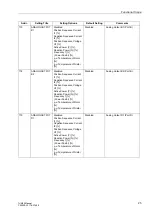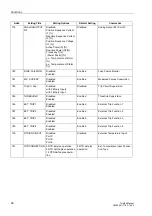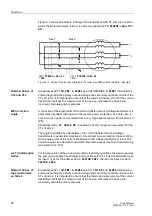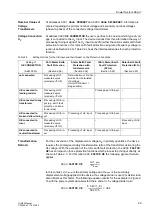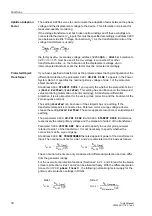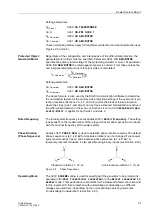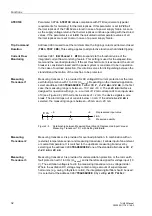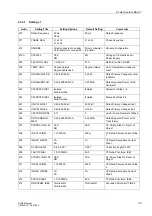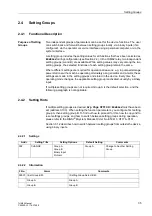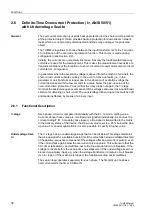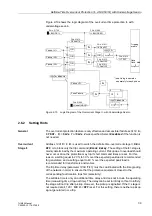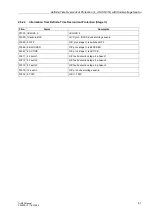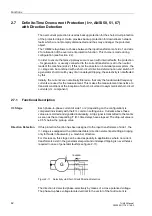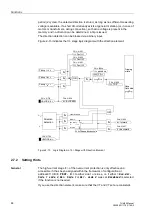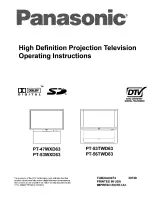
Functions
30
7UM62 Manual
C53000-G1176-C149-3
Uph/Uen Adaption
Factor
The address
serves to communicate the adaptation factor between the phase
voltage and the displacement voltage to the device. This information is relevant for
measured-quantity monitoring.
If the voltage transformer set has broken delta windings and if these windings are
connected to the device (V
N
input), this must be specified accordingly in address
(see below at side title ”Voltage Connection U
”). As the transformation ratio of the
voltage transformers is usually:
the factor U
ph
/U
en
(secondary voltage, address
) in relation to
3/
√
3 =
√
3 = 1.73 must be used if the U
en
voltage is connected. For other
transformation ratios, i.e. the formation of the displacement voltage via an
interconnected transformer set, the factor must be corrected accordingly.
Protected Object:
Transformer
If you have specified a transformer as the protected object during configuration of the
differential protection, the parameter
appears in the Power
System Data 1. It specifies the nominal primary voltage of side 1 of the protected
object (transformer).
At address
you specify the whether the starpoint of side 1
is (
Solid Earthed
or
Isolated
). This setting has an influence on the measured
value monitoring (summation current monitoring); in transformer differential
protection, it is also important for the vector group correction and the treatment of the
zero sequence current.
The setting
Isolated
can be chosen if the starpoint has no earthing. If the
transformer starpoint is connected to a Petersen coil or a surge voltage arrester,
choose the setting
Solid Earthed
. The same applies to low-ohmic or solid starpoint
earthing.
The parameters
and
determine
respectively the rated primary voltage and the starpoint of side 2 of the transformer.
Parameter
is used to specify the vector group numeral
referred to side 1 of the transformer. It is not necessary to specify whether the
connection is delta, wye or zigzag.
At address
SN TRANSFORMER
the rated apparent power of the transformer is
input. The nominal currents for side 1 and 2 are calculated on this basis as follows:
These nominal currents are only considered for differential protection and can differ
from the generator ratings.
For the overcurrent protection functions (Sections 2.6, 2.7, and 2.8) and for the break-
er failure protection, sides 1 and 2 can be allocated freely. With the differential protec-
tion set to
, the following normalizing factors apply for the
primary side protection settings in DIGSI.
U
Nprim
3
-----------------
U
Nsec
3
---------------
U
Nsec
3
---------------
⁄
⁄
I
N, S1
S
N, Transf
U
N, S1
3
⋅
----------------------------
=
I
N, S2
S
N, Transf
U
N, S2
3
⋅
----------------------------
=
I
N, S1
S
N, Transf
U
N, S1
3
⋅
----------------------------
=
I
N, S2
S
N, Generator
U
N, Generator
3
⋅
--------------------------------------------
=
Side 1:
Side 2:

